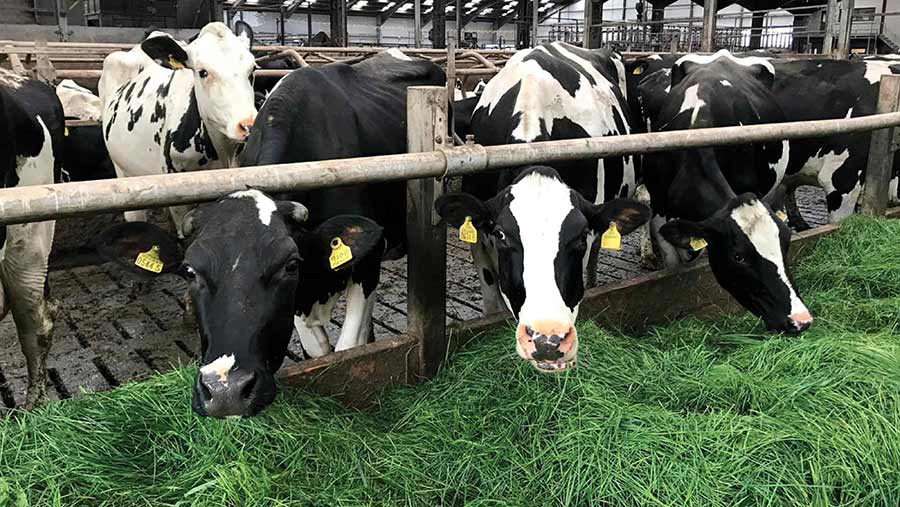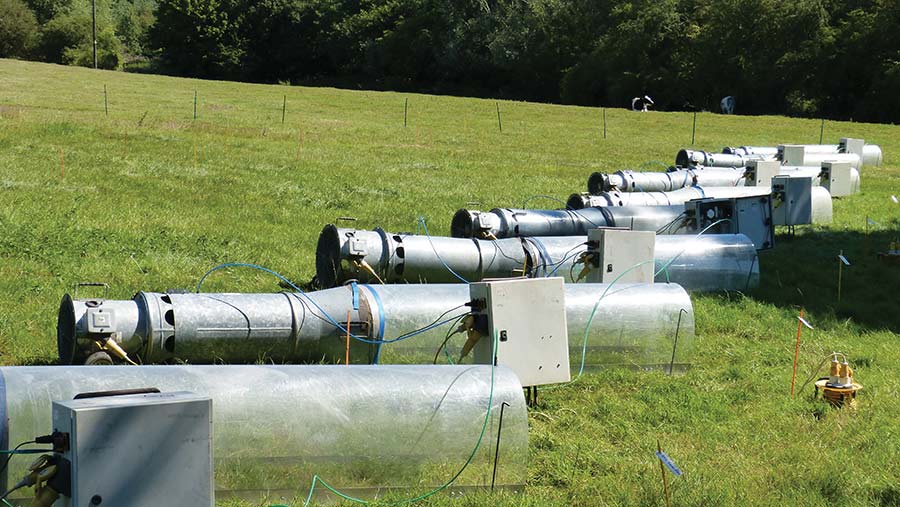Plasma-treatment cuts ammonia loss by up to 90%
 © N2Applied
© N2Applied Treating slurry or digestate with an electrical plasma wave to lower its pH can reduce ammonia loss and save on nitrogen bills by closing the nitrogen cycle.
The cost of buying and running the technology is significant, but scientists say the environmental credentials are becoming apparent.
Adas and Agri-food and Biosciences Institute (AFBI) trials show good performance as a fertiliser. Further Adas studies this summer showed ammonia loss can be cut significantly.
Farms can also prevent ammonia leaching by physically adding liquid acids – such as sulphuric acid – to slurries.
See also: How acidification of slurry can help reduce ammonia levels
How plasma treatment works
- Slurry/digestate is piped into the unit
- Ambient air is channelled into an electric arc, which splits air molecules to produce nitrogen oxide (NO) gas
- This air is piped into the unit. Slurry is piped into the unit and they mix. An electrical probe is lowered into the system to treat the slurry
- The gas is absorbed into the liquid matter to stabilise the nitrogen and eliminate ammonia loss. Nitrogen is fixed as nitrogen oxide which reacts with water and oxygen in the slurry/digestate to form NO3- (nitrate).
- Nitrate releases positive hydrogen ions (H+ ions), acidifying the solution which favours the formation of NH4 (ammonium) over ammonia NH3
- Some nitrate will also form nitrite (NO2-) in the solution, but most is oxidised to NO3-
- The ammonium, nitrate and nitrite in the slurry/digestate now all count as available forms of nitrogen and feed the soil microbiome and crop at different stages of the nitrification process. The pH of the slurry is 5-6pH (compared to 7-8pH).
Cost implications
Plasma-treatment units are made by N2 Applied, a Norwegian-based company which is now installing units in the UK.
The company says a unit will cost a farm roughly the equivalent price of a new tractor, cost £3,500/year to maintain, and pay for itself in three-to-five years, depending on farm conditions.
Adas-led trials at Gleadthorpe, Nottinghamshire, proved plasma treatment could retain 90% or more of the nitrogen. Adas concluded this autumn that treated digestate lost 8% of the nitrogen as ammonia, while untreated lost 49%.

Wind tunnels at Adas Geladthorpe have found plasma treatment can retain 90% of the nitrogen in digestate © MAG/Michael Priestley
Although the units are expensive, John Williams of the Adas soils and nutrients group says that farms will have to make significant investments to address ammonia loss regardless due to the government’s clean air strategy, a policy for dealing with air pollution.
Mr Williams says, roughly speaking, a farm applying 150kgN/ha could easily lose 30-40kgN/ha through ammonia volatilisation, which could comfortably be cut to 10kgN/ha using plasma treatment.
Depending on the markets, this could save £25/ha, which could start to stack up economically on large farms, he adds.
“Some farms may find acidification is cheaper than building new slurry stores, covering slurry stores, or using low emission slurry spreaders such as band spreading and injection equipment.
“Whether acidification replaces the need for changes to slurry storage and application infrastructure remains to be seen, but it looks good for farm efficiency and the environment.”
Why are farmers being asked to cut ammonia emissions?
- Ammonia (NH3) combines with water in the atmosphere to cause acid rain
- NH3 falling on rare habitats (nitrogen deposition) can destroy the balance of flora and fauna by promoting the growth of certain plants
- NH3 can combine with pollutants to form PM2.5 (particulate matter), PM5 and PM10 which is detrimental to respiratory health
- About 85% of UK ammonia emissions come from agriculture, of which 75% is from livestock
- The UK must cut 2005-level ammonia emissions by 16% by 2030.
Farm trial: Bingham Farm, Crumlin, County Antrim
Three years of field trials are proving the cost-saving potential of acidified digestate on a high-yielding, zero-grazing dairy.
County Antrim farmers Robin and George Bingham have trialled an N2 Applied plasma unit for three years.
They have used data from small field plots to estimate a 20-50% saving in bought-in nitrogen across the whole farm.
The farm has a biogas unit and above-ground slurry storage which made it ideal to test the technology. The slurry passes through the digester and is separated into solid particles, which go on cereal ground, and the liquid digestate part is targeted at grassland after being treated by the plasma unit.
Farm Facts
- 750 Holstein-Friesian cows plus followers
- 505ha (1,250ac), half on conacre rent
- All-year-round calving zero-grazed system
- Cows yielding about 10,500 litres/lactation
- Supplying Strathroy Dairies on a liquid contract
- 250kW biogas plant
Trials
The farm trials were conducted by the AFBI. Three rates of nitrogen – 100kg, 200kg and 300kgN/ha/year – were applied with a dribble bar to 2mx8m (0.0016ha) plots.
The study compared dry matter production on a silage ley for different treatments (see table below).
Because the treated slurry is acidic, it lowered the soil’s pH from 5.93 to 5.8 in the first year, but AFBI said it was similar to that of inorganic nitrogen or rainwater and soil testing and liming would manage this.
Last year the farm spent £50,000 on nitrogen, which, at the application limit of 170kgN/ha/year, could be reduced to £25,000, depending on weather conditions, says George Bingham. Colder and more damp conditions mean conventional slurry/digestate loses less ammonia to the atmosphere, while warm and dry conditions sees plasma-treated slurry perform better.
“There’s no smell to it and if I can reduce emissions and potentially even stop using bagged nitrogen some years, it must be good for the environment,” adds George.
“I don’t know whether fertiliser companies are worried but there is some potential with this technology – it could really shake things up.”
Average grass dry matter produced (DM/ha) |
|||
|
Fertiliser |
2018 yield (two cuts) |
2019 yield (three cuts) |
2020 yield (two cuts) |
|
CAN (27% N) |
9t |
13.7t |
9.42t |
|
Treated slurry digestate |
8.9t |
12.7t |
10.04t |
|
Untreated slurry digestate |
7.79t |
12.89t |
8.24t |
Benefits and considerations of plasma treatment |
|
|
Benefits |
Considerations |
|
|
